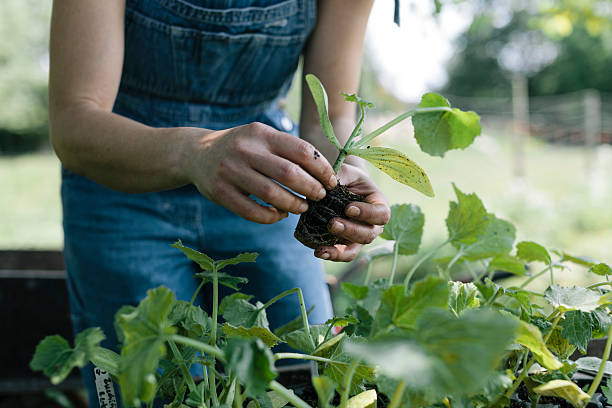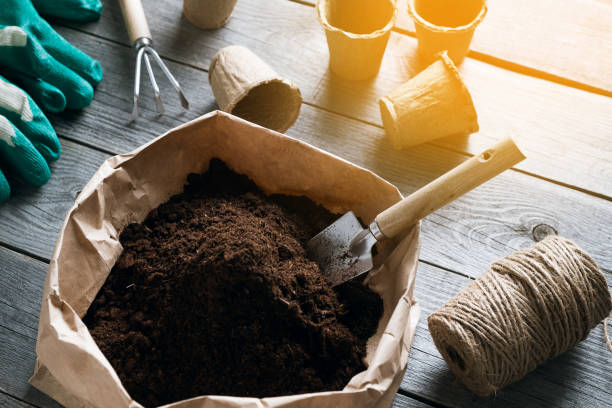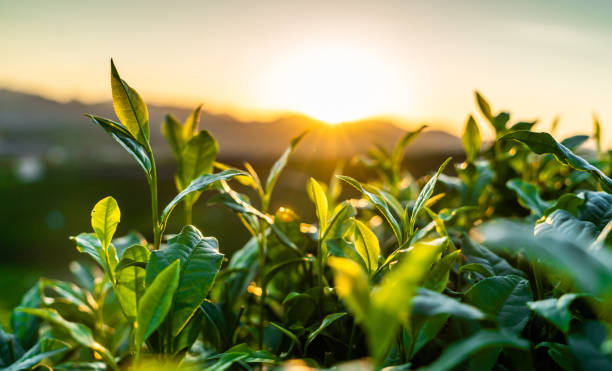Hello Gardener buddy.,
I’m happy that you are going to start container gardening. It’s a good option for small-space gardeners, and people who don’t have much time for gardening, plants help to make aesthetic appeal easily, and you can get fresh air as a bonus benefit. Not only these you can get vegetable, fruit, and herb harvest by setting up container kitchen gardens.
The benefits list is bigger than you thought, the reason to start container gardening is growing big these days, because of air pollution, lack of space, and people’s enthusiasm and interest to make their living space more appealing. After the urbanisation lot of people adopted container gardening as a hobby, because of the pocket-friendly costs, less messy than the ground garden, and less time to care for even people with busy lifestyles pick a few hardy plants to grow in their homes.
After picking the container gardening you might do research through YouTube, google search and Pinterest. They show some fancy-looking gardens and recommend advanced methods you might feel confused about the details. Here I going to give you some reality checks and important factors to notice before starting container gardening in simple language.
You can get detailed blog posts about the basics of container gardening with 10 categories with 5 posts each of the topics in future blog posts you can read those blogs for reference and I’m trying to cover all container gardening issues, and doubts in every possible way.
PLANT SELECTION

Choosing the right plants is crucial in container gardening because the plants decide the soil, pot size, watering, light requirements, and fertilizer requirements. While there are common soil ratios, watering schedules, and fertilizers suitable for most container plants, selecting specific plants or gardening methods can streamline the process, especially for beginners.
If you’re interested in creating a foliage garden for aesthetic appeal and air purification, you don’t need to worry about harvesting techniques or flower plant care. This approach simplifies gardening, focusing on plants with similar needs. Starting with low-maintenance plants and one type of plants or gardening method is ideal for beginners. These plants typically have similar care and watering requirements, reducing the chances of feeling overwhelmed. Additionally, this approach creates a thematic look for your garden, and each gardening method offers hundreds of plant varieties.
For those with more experience or those who can dedicate more time to gardening, exploring various gardening methods is an option. However, it’s still essential to address the specific needs of each plant type to ensure they thrive. I’ve nearly 100 plants combined a variety like House plants, succulents, flowers, herbs and veggies.
Here are some popular container gardening types that are suitable for beginners:
- Flower Garden: Ideal for adding colour and fragrance to your space. Requires knowledge of flowering cycles and care techniques.
- Edible Garden: Includes vegetables, fruits, herbs, edible flowers, and micro-greens. Perfect for those who want to grow their food.
- Herb Garden: Focuses on culinary and medicinal herbs. Easy to manage and highly rewarding.
- Foliage or Ornamental Plants: For aesthetic appeal and air purification. Includes plants with attractive leaves.
- Succulents Garden: Low-maintenance plants that require minimal watering. Great for beginners.
- Aquatic water Garden: Plants that grow in water. Requires specific knowledge about water conditions.
- Wildlife Habitats: Gardens designed to attract and support wildlife like bees, butterflies, and birds.
- Home Décor Garden: Plants chosen for their decorative appeal. Includes a mix of various plant types.
- Small-space Garden: Maximizes limited space with compact plants and creative arrangements.
- Vertical Garden: Uses vertical space to grow plants, ideal for small areas. Often involves wall-mounted planters.
Starting with a specific plant type or gardening method tailored to your intere sts and experience level can make container gardening enjoyable and successful. As you gain experience, you can explore more complex gardening methods and diversify your plant collection.
SOIL

The core idea of Potting Soil is creating a ground-like ecosystem and giving liveliness that supports plant growth. Using organic potting medium and fertilizers allows life in potting soil like earthworms. Apart from these reasons, every plant has a unique soil preference and needs.
Cacti and succulents prefer well-drained soil, and Edible plants prefer well-drained moist soil, most of the plants hate soggy soil that leads to root rot, and soil without a capacity to hold moisture leads to underwatering. So, knowing what type of soil your plants need is the first step to successful gardening.
Compared to land in containers they can hold limited water and a limited amount of soil so make sure that a limited amount of soil is fully enriched. Soil is a source your plants going to grow so make sure they are filled with nutrients don’t give empty garden soil to your container gardening plants.
If you going to put your plants on a balcony, terrace or hanging pots consider using cocopeat instead of garden soil. Cocopeats are less weight, good in aeration and roots grow well in their porosity. Read more about best potting mix
The soil’s pH levels need to be adjusted to specific plant types, like some vegetable plants and succulents need little acidic soil to grow well. So, you can increase or decrease the compost and manure levels according to plant needs.
Make sure your soil is well-drained, cocopeat and perlite make the soil well-drained this factor helps to avoid root rot. Cocopeats not only drains well they also hold needed moisture so plants don’t die underwater.
POTS

These topic need a huge series of blogs (like the marvel series) because they include shape, pot size, material, price and a lot more. Choose shapes that look good in your home or the corner where you choose to place the pot. If you choosing pots for decor, make sure they are aesthetic.
If you choose pots for a sunny semi-outdoor spot make sure they are UV-protected and stable quality material. If you lack space choose vertical fitting (hanging pots, vertical planters) or horizontal fitting (window boxes, Railing planters). Whatever the pot makes sure they have a drainage hole or use the double pot method.
Choose a pot size 1-2 inches bigger than a root ball size, not a plant size, if you thinking I going to put my 4-inch root balled sized plant sapling into 10-inch pots so I don’t need to transplant it for years, I’m sorry buddy that thing leads to root rot or kills the plant due to overwatering. Bigger pots hold a lot of moisture than smaller plants the pot holds more moisture than the actual need of the sapling.
Plastics are affordable in price if you maintain them properly without high exposure to heat it will hold up to 5 years. Concrete pots have more life than plastic pots but it’s heavier than anything else. Mud/terracotta pots are eco-friendly options but its fragile. Ceramics are good for decor purposes they are also fragile. Metal pots are heavy-duty they have problems with rust as well. Its totally up to your needs. Choosing a pot as a beginner is challenging sometimes, read the beginner guide for pots to get some useful insights.
WATERING

The first warning I going to give you is don’t show your love for plants by watering that makes the soil soggy and root rot., and also don’t ignore your plants (like your ex).
Do a finger test on the soil on your pots if the upper layer is completely dry water them, if you feel a little moist you can water them the next day, if you feel the soil stick it on your fingers don’t water. Make sure your plant pots have drainage holes so the excess water drains out.
You going to learn a lot of watering techniques and tools in uploaded blogs but as a beginner, this touch and water help you water properly. Use less pressured watering tools for small plants like watering cans, spikes, or drip irrigation, to water the sapling use sprayers to not cause any damage.
Try to water before 9 am or after 6 pm, if the weather is cold don’t water plants in the evening it holds excess moisture and leads to fungal infection in the soil. Make sure the soil is well-drained and water retention soil.
LIGHT-REQUIREMENTS

Indoor plants also need sunlight so do a little research about the plants you going to buy and know about their light requirements and avoid low-light stress.
Semi-sunny spots like the near wall in the terrace with roofing, balcony, and patio, if the house faced the front sit-out you can grow veggies and herbs and flowers these are sun-loving plants.
If you have a window spot or a spot that gets 2-3 hours of minimum sunlight you can grow house plants like the snake plant, ZZ plant, Philodendron, and pothos.
And shade-loving plants can survive that shady spots in your house.
I recommend one thing for Indian gardeners especially, don’t put any plants in direct sun in summer. It’s also for full-sun plants Indian summer is not for any plants, If you put plants then you can see the plants slowly burn or scorch on them.
FERTILIZERS

The only thing I’m going to recommend about fertilizers is to try to use organic fertilizers as much as possible. Because organic fertilizers enrich the soil you can reuse them, they have longer life than you expected. In the longer run the soil with organic fertilizers turns into enriched soil.
It encourages life under the soil, promotes fertilization encourages root growth. Try to use organic fertilizers like, bonemeal, banana peel, mustard cake, vermicompost, manure, neem cake, and seaweed.
TOOLS

In container gardening, having the right hand tools is essential for maintaining your plants efficiently and effectively. Unlike traditional gardening, container gardening doesn’t require large tools, but a few well-chosen hand tools can make all the difference. Here’s a guide to the essential hand garden tools for container gardening and tips on how to maintain them.
- Trowel: A small, handheld tool perfect for digging small holes, planting seeds, and transplanting seedlings. A sturdy, rust-resistant trowel will serve you well.
- Hand Rake: This tool helps in loosening the soil, removing weeds, and aerating the soil in your containers. A handheld version is ideal for working in small spaces.
- Hand Fork: Useful for breaking up soil, turning it over, and mixing in compost or fertilizer. Its prongs are great for loosening compacted soil without damaging roots.
- Pruners: Essential for trimming and shaping plants, removing dead or diseased parts, and encouraging healthy growth. Invest in a good quality pair that is sharp and comfortable to use.
- Soil Scooper: Perfect for scooping soil, compost, or mulch into your containers. A soil scooper with measurements can also help ensure you’re adding the right amount of material.
- Watering Can: A small watering can with a long spout helps direct water precisely where it’s needed, minimizing waste and avoiding waterlogging.
- Garden Gloves: Protect your hands from dirt, thorns, and potential irritants with a good pair of garden gloves. They should be durable yet flexible enough to handle delicate tasks.
- Weeder: This tool is designed to help remove weeds from the root, preventing them from growing back. It’s particularly useful for tight spaces and around delicate plants.
Maintenance Tips
– Clean Tools After Each Use: Remove soil, sap, and moisture to prevent rust and corrosion.
– Sharpen Blades: Keep pruners and other cutting tools sharp for clean cuts, which help plants heal faster.
– Oil Moving Parts: Apply a light coating of oil to metal parts to prevent rust and ensure smooth operation.
– Store Properly: Keep tools in a dry, sheltered place. Hang them up or store them in a toolbox to avoid damage.
By using and maintaining these hand tools, you can make your container gardening experience more efficient and enjoyable. With proper care, these tools can last for years, making them a worthwhile investment for any gardener.
PESTS AND DISEASES

In container gardening, there are some common pests, and identifying these pests and diseases helps to treat them.
Some common pests and diseases that can affect plants in container gardening include:
- Aphids: These small insects feed on plant sap and can cause damage to leaves and stems. To control aphids, you can use insecticidal soap or neem oil, or introduce natural predators like ladybugs.
- Spider mites: These tiny pests can suck the sap from plant leaves, causing them to turn yellow and dry out. To get rid of spider mites, you can spray plants with a mixture of water and dish soap, or use neem oil.
- Powdery mildew: This fungal disease appears as a white powdery coating on plant leaves and stems. To prevent powdery mildew, make sure plants have good air circulation and avoid overhead watering. You can also use a fungicide to treat infected plants.
- Root rot: This disease is caused by overwatering, which leads to the roots becoming waterlogged and rotting. To prevent root rot, make sure containers have good drainage and only water plants when the top inch of soil is dry.
- Leaf spot: This fungal disease causes dark spots to appear on plant leaves. To prevent leaf spots, avoid overhead watering and remove any infected leaves. You can also use a fungicide to treat the disease.
SEASONAL CARE

While the season changes you need to make little changes to your garden to protect your plants from being affected by seasonal changes like extreme heat, cold, wind and rains.
SPRING
– Check containers for any damage or wear and tear from the winter months.
– Refresh the soil in containers by adding new potting mix and fertilizer.
– Prune back any dead or overgrown foliage to encourage new growth.
– Start planting new annuals or perennials for the upcoming growing season.
SUMMER
– Water plants regularly, especially during hot and dry weather.
– Fertilize plants every few weeks to promote healthy growth and blooming.
– Monitor plants for signs of pests and diseases, and take appropriate action if necessary.
– Provide shade or move containers to a cooler location during heatwaves to prevent plants from wilting or burning.
FALL
– Clean up containers by removing any dead or dying foliage.
– Bring tender plants indoors or protect them from frost with frost cloth or a greenhouse.
– Reduce watering frequency as temperatures cool down and plants enter dormancy.
– Plant cold-hardy varieties for winter interest, such as ornamental cabbage or pansies.
WINTER
– Protect containers from freezing temperatures by moving them to a sheltered location or insulating them with bubble wrap or burlap.
– Water plants sparingly, as they require less moisture during the dormant winter months.
– Prune back any dead or damaged branches on shrubs or trees in containers.
– Plan and prepare for the upcoming spring season by ordering seeds or planning new plantings.
PRUNING AND TRIMMING

Why prune and trim?
Pruning and trimming help to promote healthy growth, remove dead or diseased plant material, and shape plants to keep them looking attractive and in proportion with their container. Regular pruning can also help to increase flowering and fruit production.
When to prune and trim?
The timing of pruning and trimming will depend on the specific plant and its growth habits. In general, it’s best to prune and trim in the spring or early summer, after the plant has finished blooming. Avoid pruning in the fall or winter, as this can stimulate new growth that may not have time to harden off before cold weather arrives.
How to prune and trim?
When pruning, use clean, sharp pruning shears to make clean cuts at a 45-degree angle just above a leaf node or bud. Remove any dead or diseased branches or stems, as well as any crossing or rubbing branches. For trimming, use scissors or hand pruners to remove any spent flowers or leggy growth, or to shape the plant as desired.
Tips for specific plants:
– For flowering shrubs, prune after blooming to remove spent flowers and shape the plant.
– For herbs, pinch back the tips of the stems regularly to encourage bushier growth and prevent legginess.
– For fruit trees, prune in the late winter or early spring to remove any dead or diseased wood and to shape the tree for optimal fruit production.
– For vines, prune in the early spring to remove any dead or damaged growth and to shape the plant for optimal growth and flowering.
Remember to always research the specific pruning and trimming needs of your plants, as different species may require different techniques or timing.

